
„Donkeys, it seems, are an indispensable asset to the would-be slow traveller“, writes Nicky Gardner in the Slow Travel Manifesto.[1] Donkeys as transportation unite the longing for speed of the 19th century and the desire for slowing down of the 21st century. Earlier adventurers preferred fast donkeys over camels to cross deserts. Today, donkeys are symbols for Slow Travel, because they are slower than buses, trains and airplanes.[2]
Individual travel in the Spanish mountains
In the year 2014, I met a very interesting human being at a music festival – a merchant from Hanover who sold sheepskins. At the night-time campfire he told me about his three-month travel with a donkey in the Spanish Pyrenees. Alone with the animal, he oriented himself by an analog map and the donkey to point the direction. He described how the breaks were dictated by the animal and how he got into a deep connection with nature. In a romantic old-fashioned way he was a true Slow Traveler.
He also talked about a borderline experience, when he thought he was lost: The two companions had not found water for about two days and were shortly before dying of thirst. The donkey ultimately led him to a water hole and rescued his life in the deserted wilderness. After the long-term travel the separation from the animal was equally hard. They had become friends. The merchant gave the donkey wistfully to a Spanish farm, whose owner promised to take good care of the animal.
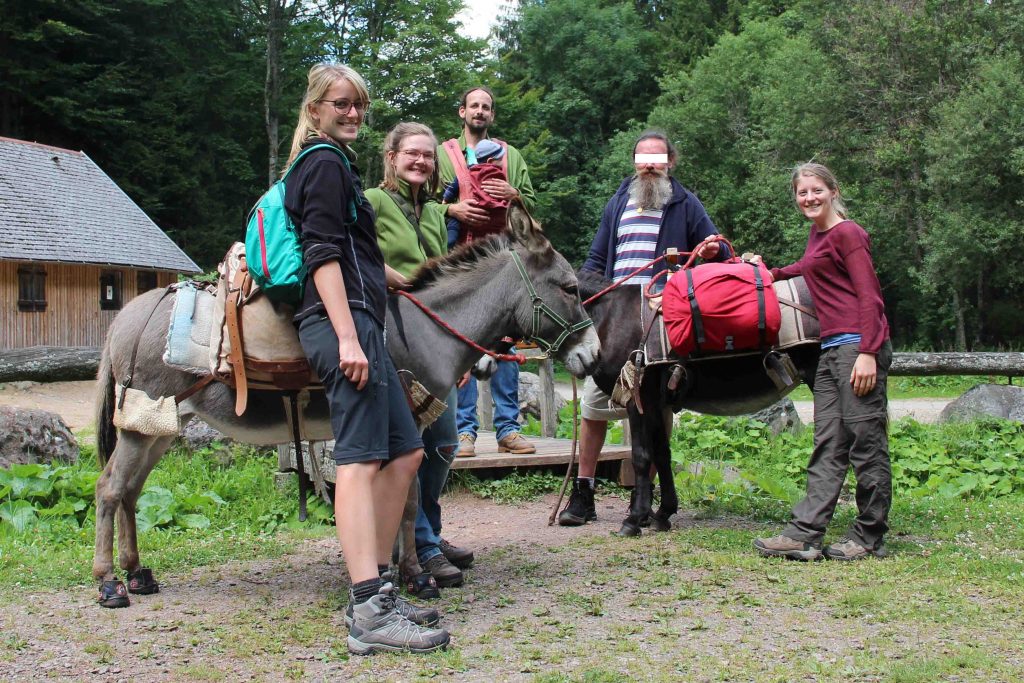
Two-day family hike in the Blackforest
After the adventure tale at the campfire I was hooked and wanted to try out travelling with donkeys myself. Without any previous experiences with donkeys, I wanted to take small steps towards the travel concept. In July 2017, we booked a manageable, two-days donkey hike with the Adamshof in the Blackforest. Our colorful group consisted of five adults and a five-month old baby.
At 10.30 a.m. on a sunny Saturday morning, we got an one-hour introduction into handling the donkeys by Rita Gering, the owner of the Adamshof. The farmer showed us how to put on the harness and saddlebags, how to take care of fur and hoofs and how to help the donkeys into their shoes, which protected the hoofs from injuries. It was also explained how to lead the animals and what to do if a donkey runs unbraked towards one (make yourself large and stay still). Since our two donkeys both could carry 25 kg weight, we spread supplies and luggage into the saddle bags. Our youngest hiking participant was carried in an on-body baby carrier.
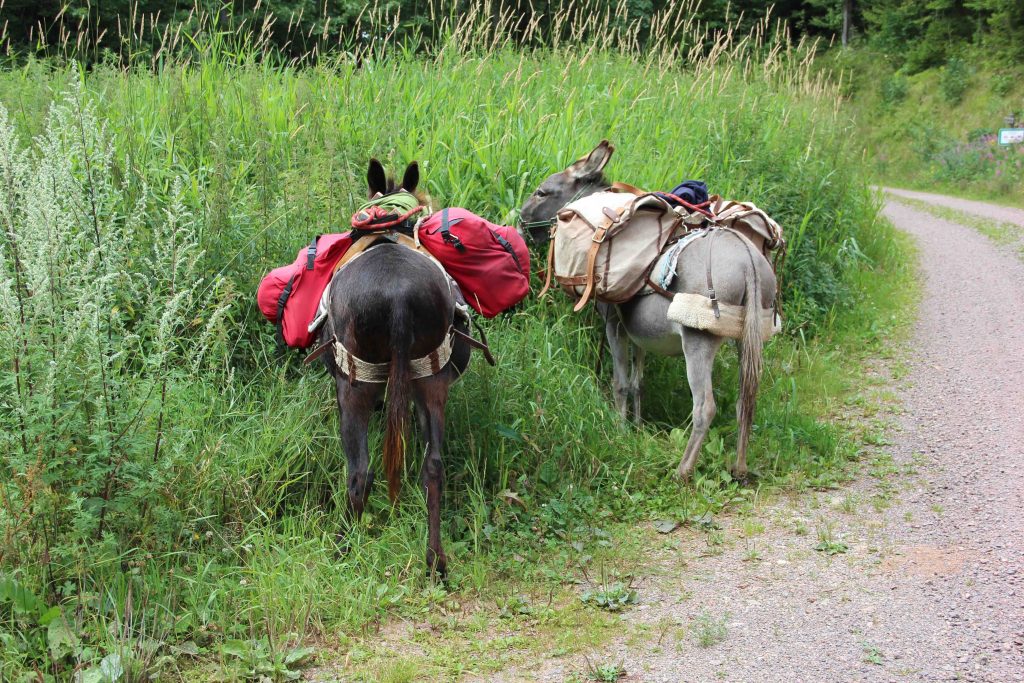
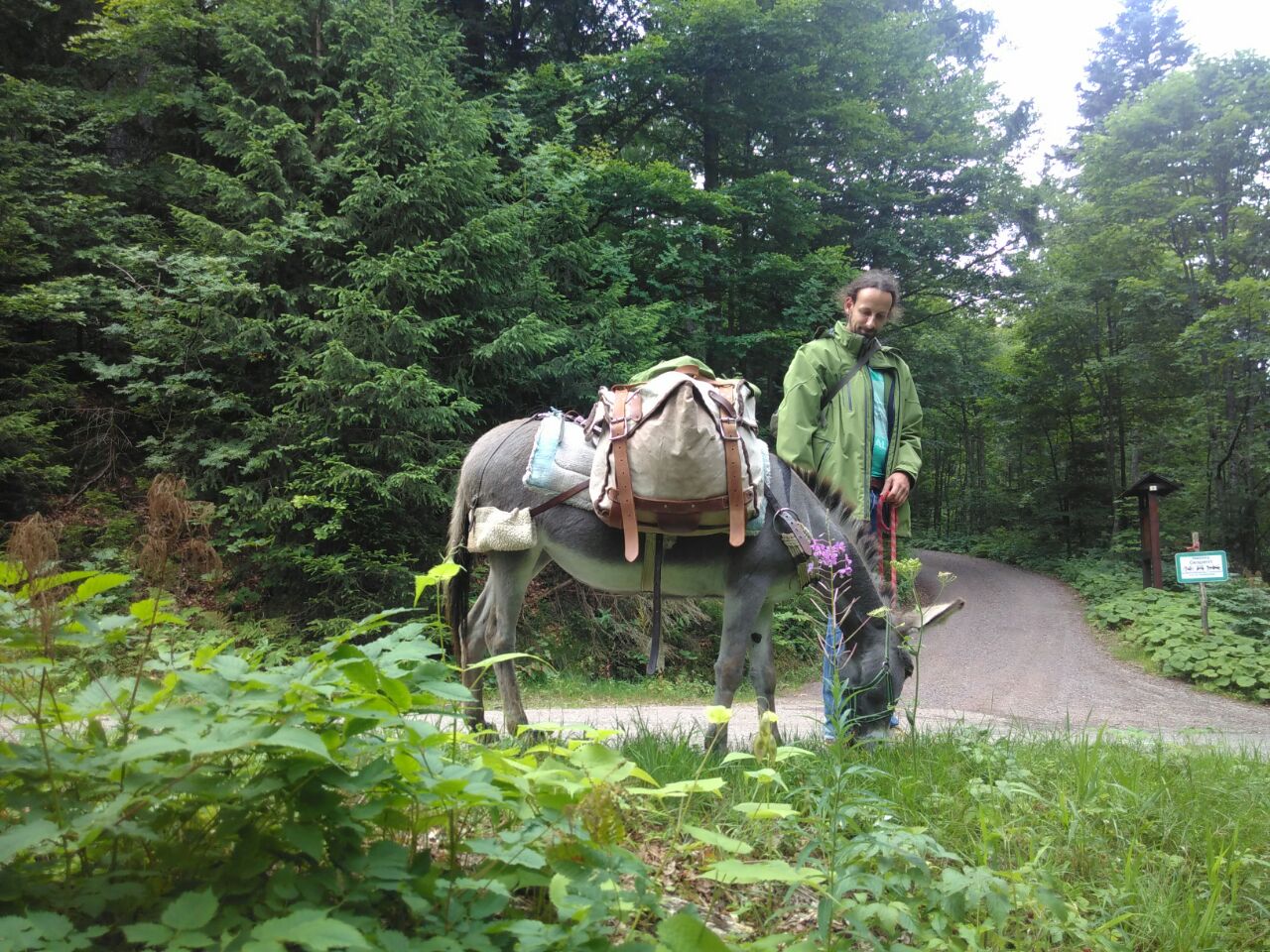
After the introduction, we started our 6 km long hike to the night’s accommodation, the Raimartihof, Gasthaus zum Feldsee. The tour was planned by the Adamshof and the accommodation accordingly informed. Donkey hiking is surprisingly different to what one could imagine. To stop the donkeys from eating the greens at the road side and to make them walk was at the beginning difficult. The donkeys walked 4 km/h and therefore a little slower than walking speed. Our fairly sporty group was slowed down and had to adjust to the walking speed of the donkeys. We were indeed slower on the road than we were used to, but had our fun with the animals. Additionally, it created more room for conversations and breaks.
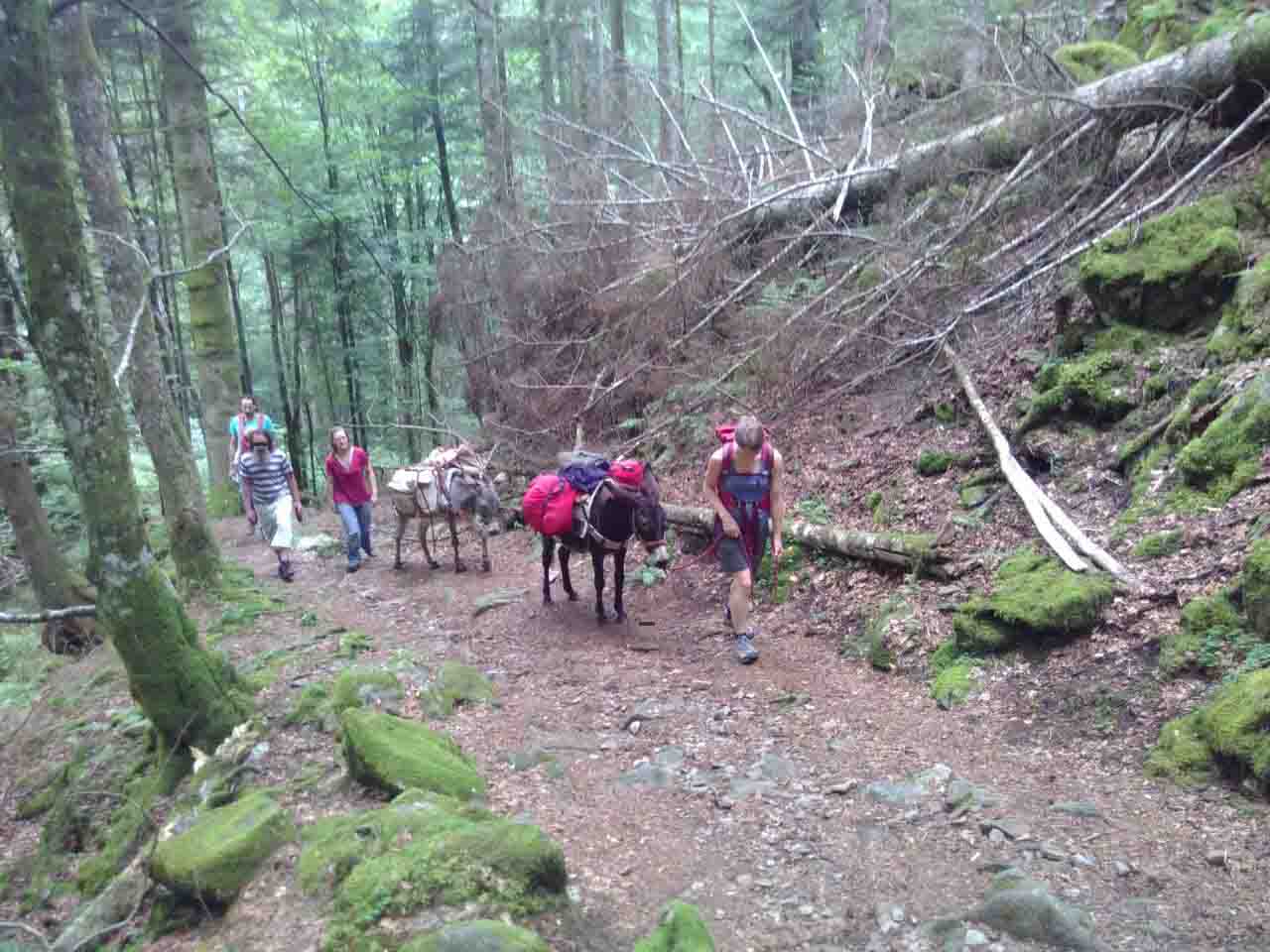
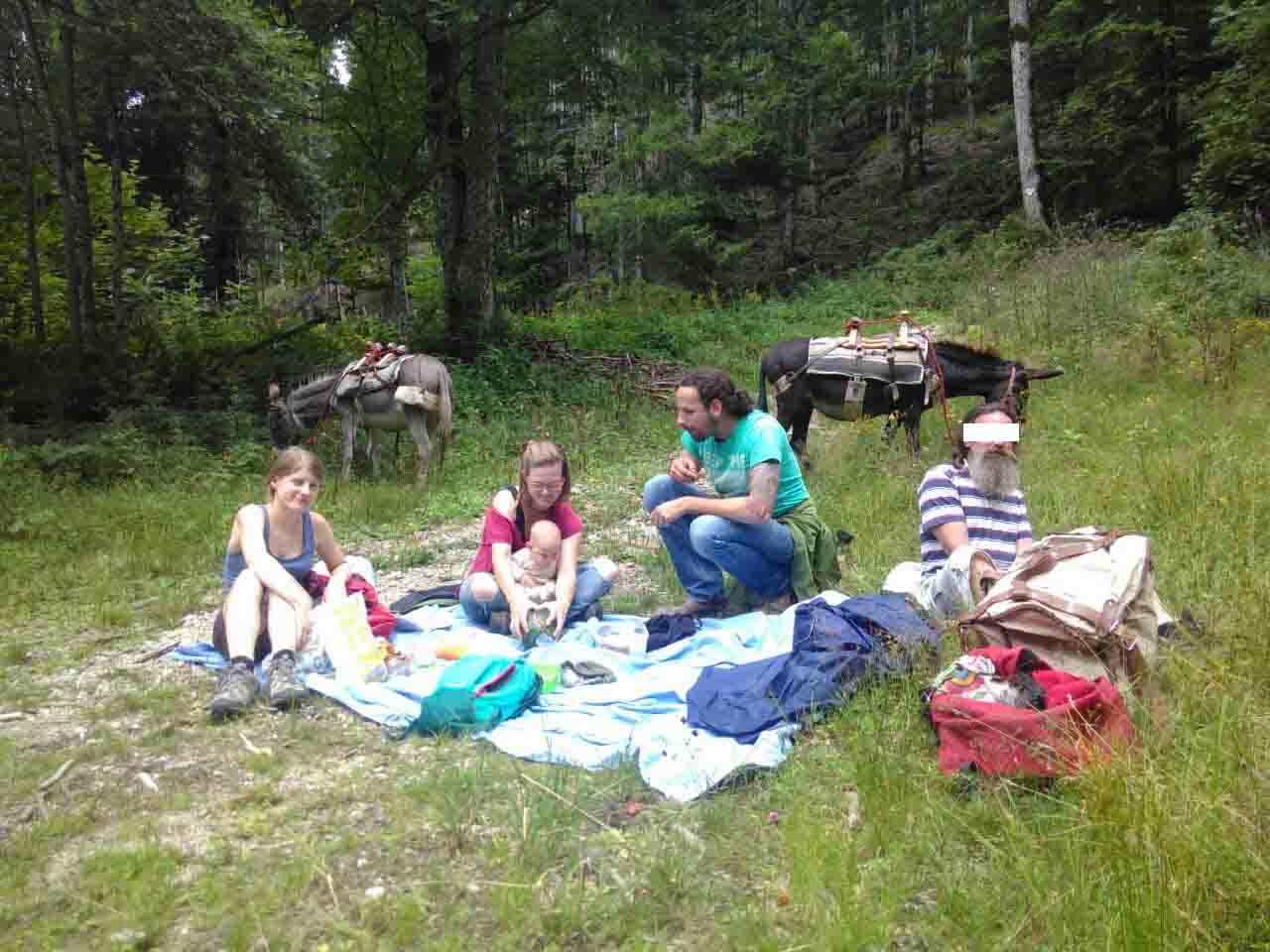
About four hours later we arrived at the Raimartihof. The donkeys were led free onto a meadow, where they could finally pursue their favorite activity, eating grass. Our group was accommodated in the barn, what enriched the Slow Travel experience. We slept directly on the fragrant hay in the dark barn next to the donkey’s meadow. In the evening we had dinner at the restaurant of Raimartihof and sat on the campfire until late at night.
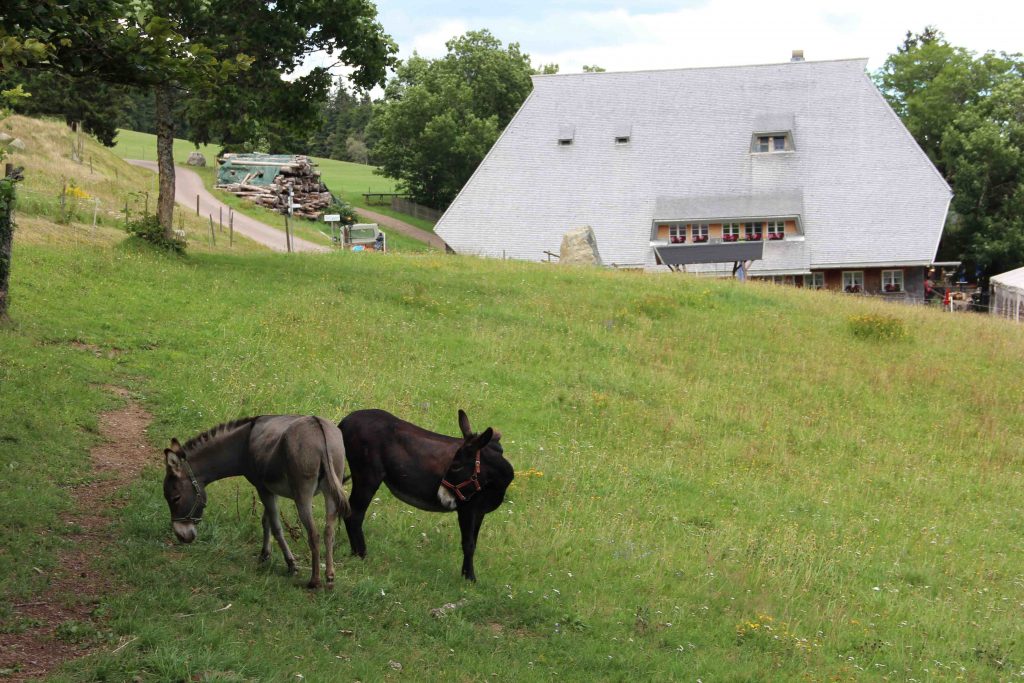
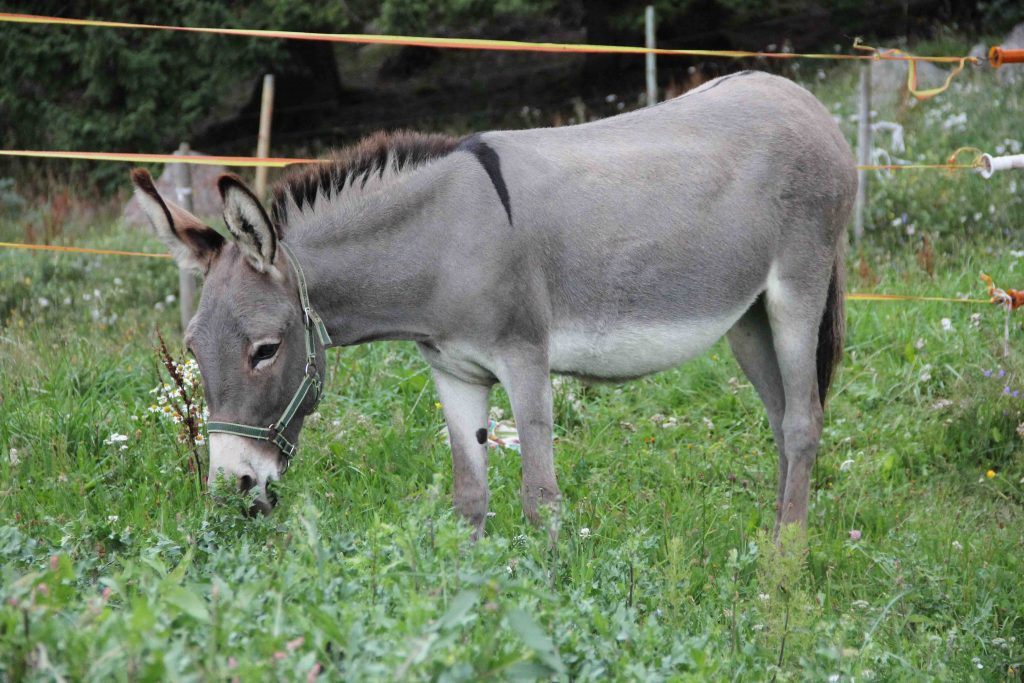
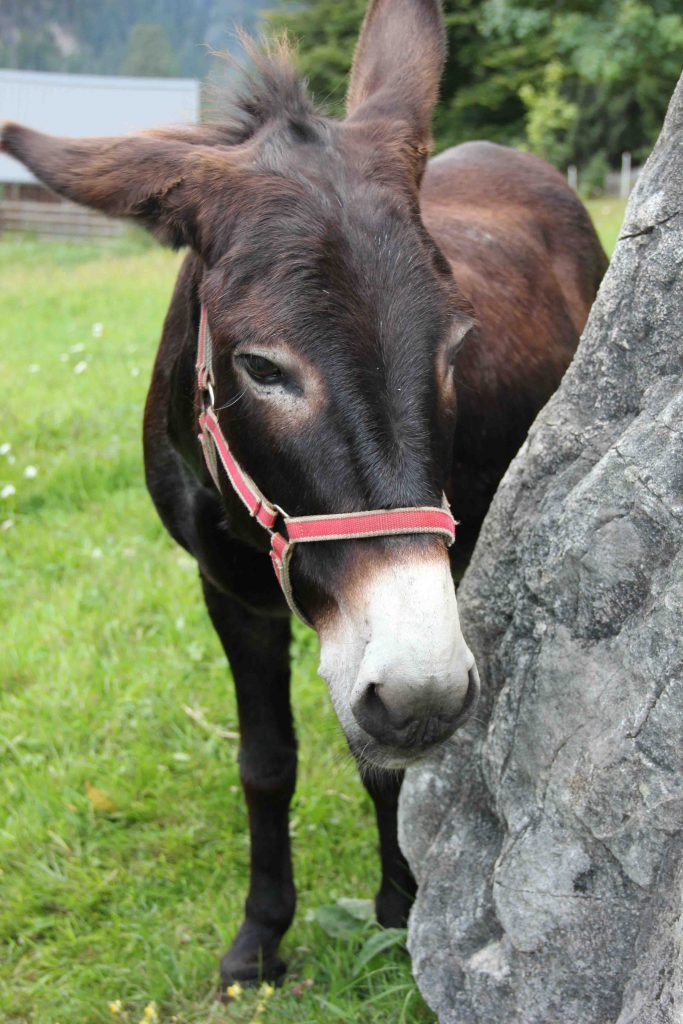
The next morning, we were being awoken by the cock crow and sun beams, which flashed trough the barn’s planks. After a relaxed breakfast with scrambled eggs and coffee, we picked up our donkeys from the meadow. They already recognized us and ran happily towards us. The donkey hike at the next day went faster, because the animals followed us better. If we had spend more days with them, we would have become a well-coordinated team.
All in all, the donkey hike was not only a genuine Blackforest experience, but also a pure Slow Travel adventure. It contained much nature, family-owned farms, local food and drinks, meeting locals and last but not least the slowing down by donkeys. Through the handling of the animals we conquered initial insecurities and learned new skills.
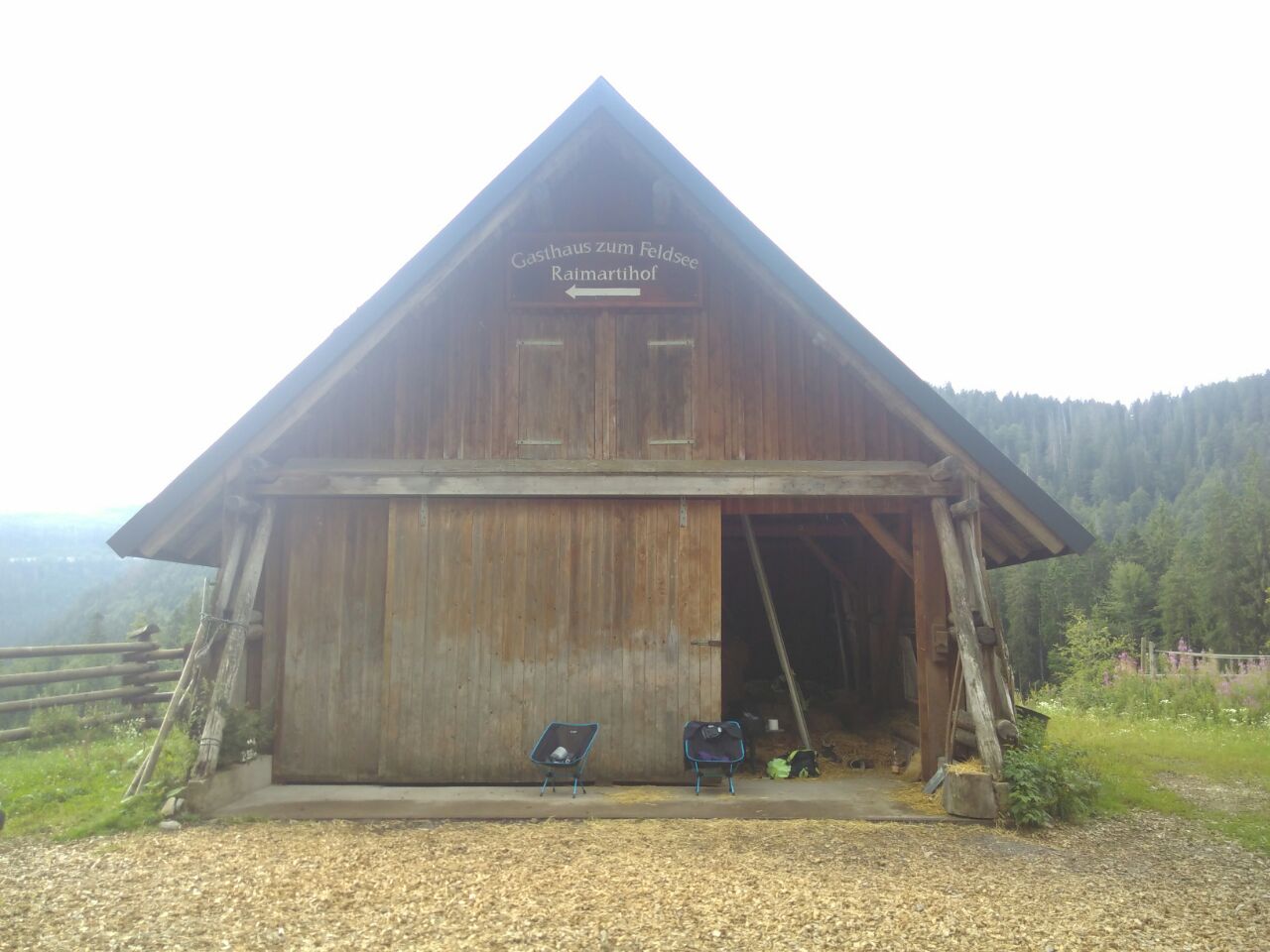
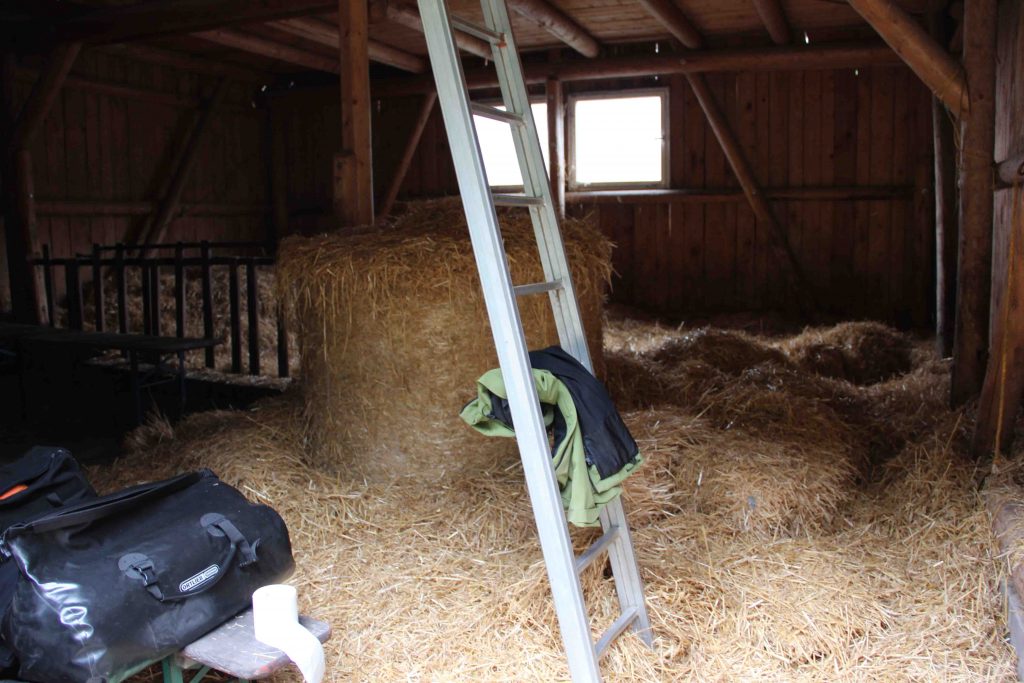
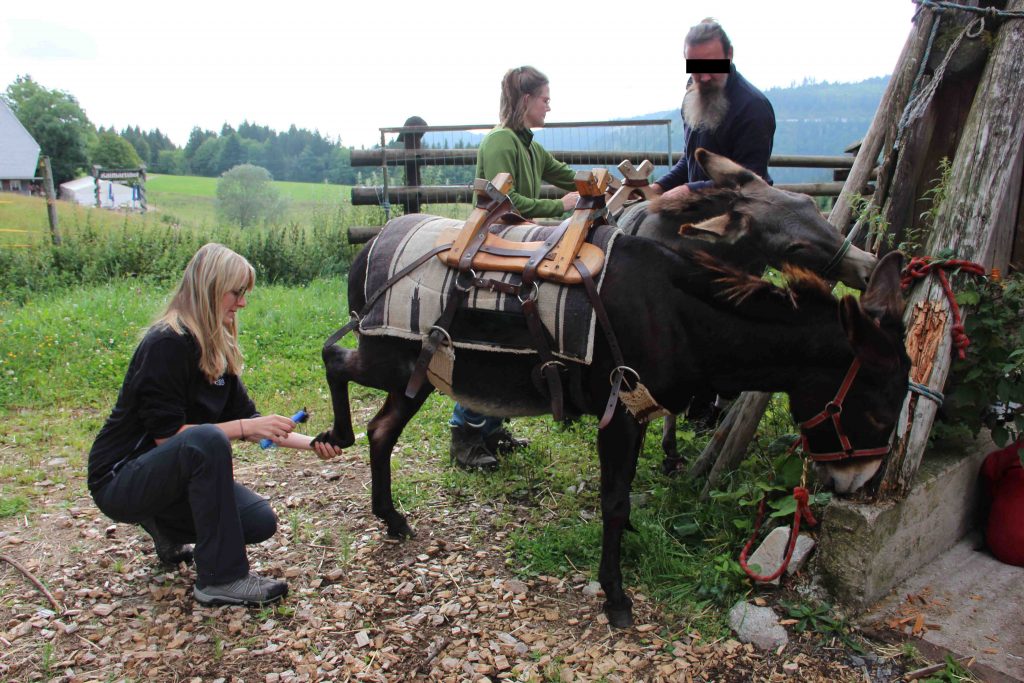
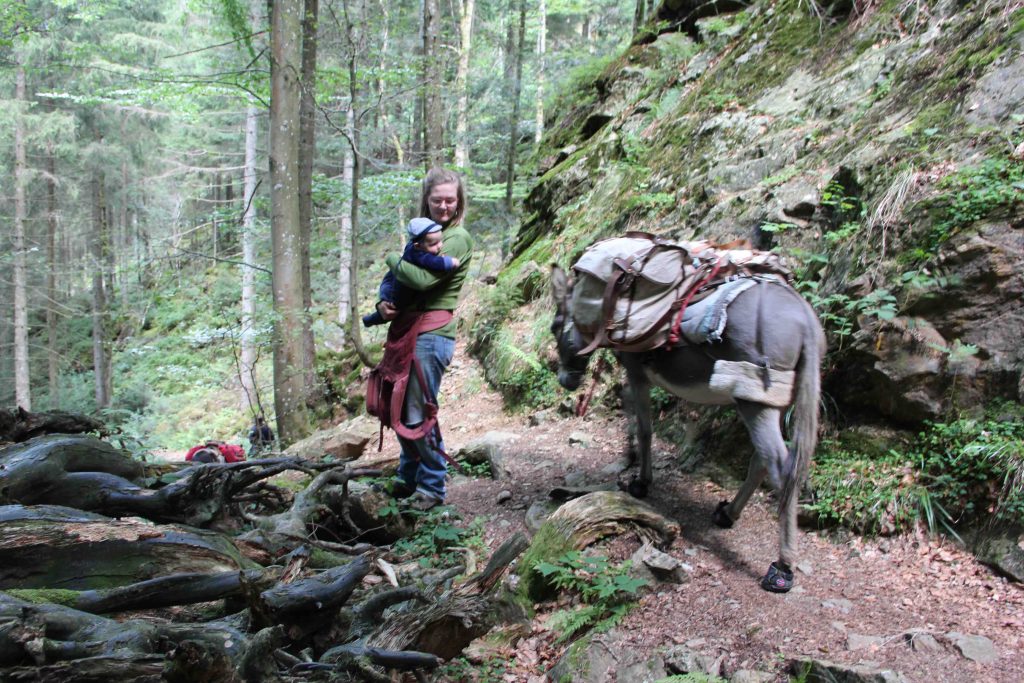
Tour operators of donkey hikes
With donkeys the transport from A to B becomes an exciting travel experience and transforms the act of travelling to the actual goal. Especially for children hiking with animals is an adventure. Meanwhile there exist many tour operators of guided and individual donkey hikes – in some cases they even offer goats, lamas or alpacas to join hikes. The Slow Travel hikes vary from short hours (donkey walks) to hikes that last several weeks, for example in Ireland, Spain or France.
In the following you find a selection of tour operators for donkey hikes. Country codes like DE or EN stand for the website’s language.
Baden-Württemberg, Germany | DE
Bayern, Deutschland | DE
Rhineland-Palatinate, Germany | DE
Hessen, Germany | DE
Saxony-Anhalt, Germany | DE
Eselführungen in Ilsenburg im Harz
North Rhine-Westphalia, Germany | DE
Hamburg and Schleswig-Holstein, Germany | DE
Brandenburg, Germany | DE
Esel-Freunde im Havelland e.V.
German tour operators | DE
Eselwandern Erlebnisreisen Multi-day travel, with or without guides, in Germany, France, Italy, Portugal, Romania or Spain
Katja van Leeuwen Reitferienvermittlung – Mulit-day travel, with guides, in Germany, Ireland, France, Spain and Italy
ReNatour – Mulit-day travel, with or without guided, in Germany, Italy, France or Portugal
Italy | IT
France | EN
Portugal | EN
Spain | DE | EN | FR | ES
Belgium | DE | EN
Donkey & Co – EN
Eselworkshop – DE
Ireland | EN
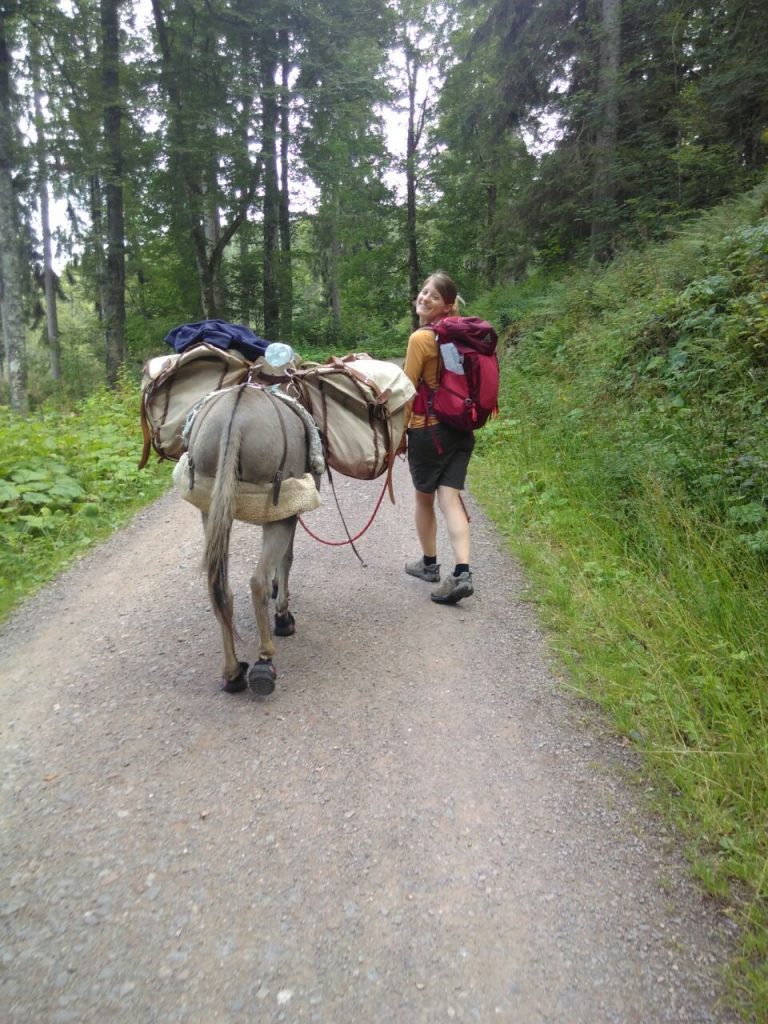
Feel free to leave a comment, if you have questions, have been on a donkey hike yourself or if you know other tour organizers. I am happy to include other tour organizers in the list.
[1] Gardner, Nicky (2009): A Manifesto for Slow Travel, In: https://www.slowtraveleurope.eu/slow-travel-manifesto (23.10.2020).
[2] See Ibid.
Article by Anika Neugart.